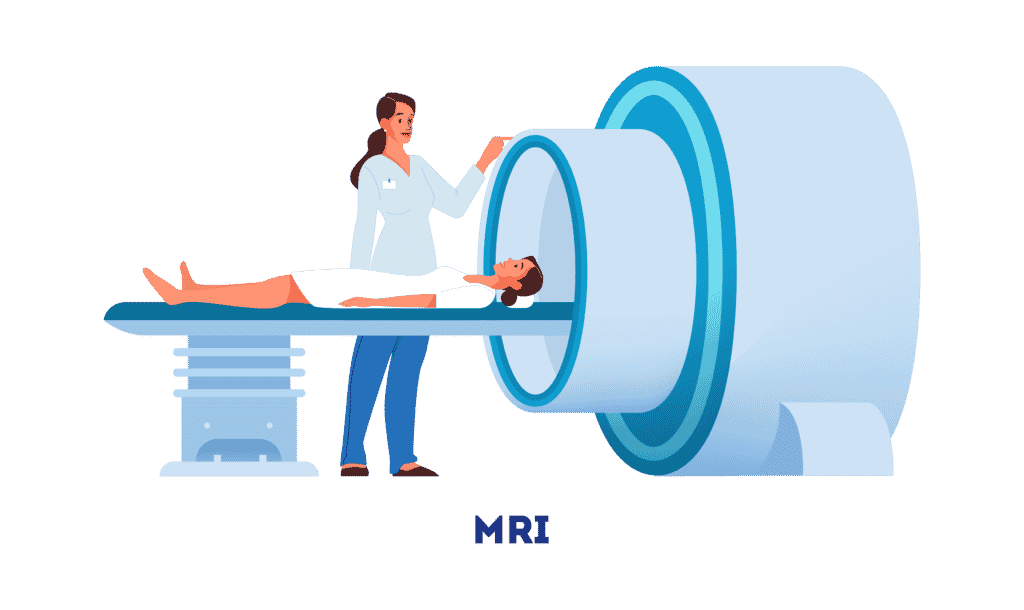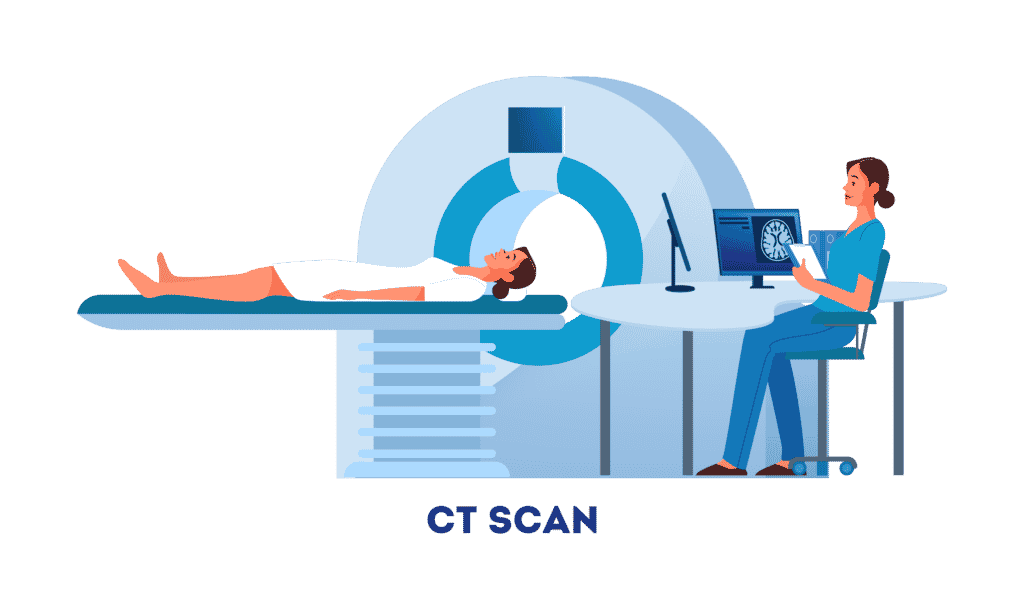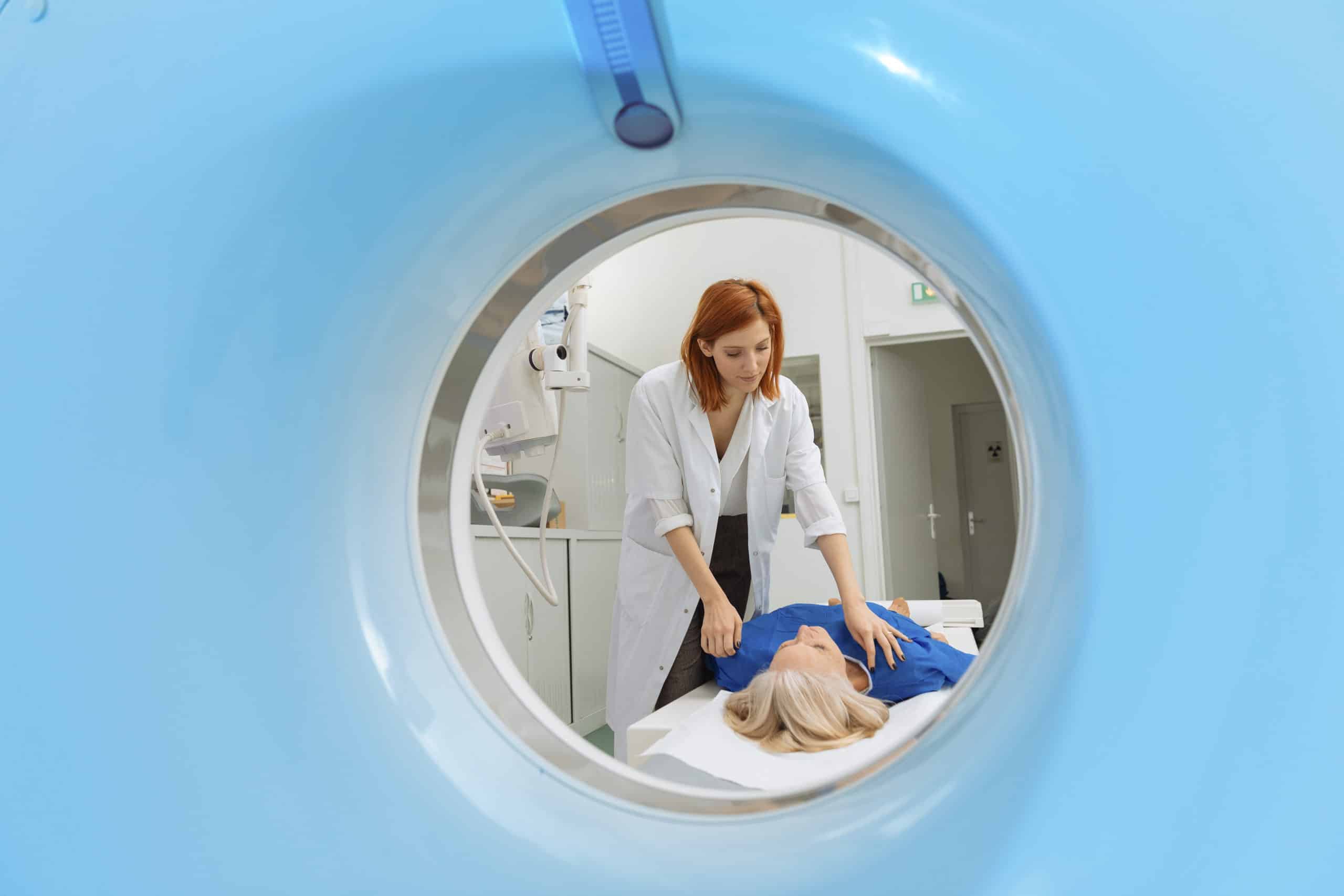A computed tomography (CT) scan, or computer axial tomography (CAT) scan, is a non-invasive type of imaging.
This method uses multiple X-ray images to produce detailed, cross-sectional images of the body that show the internal anatomy. For head and neck cancer patients, CT scans may be used to detect cancers of the sinuses and nasal cavity. CT scans of the chest may also help determine if cancer has spread to the lungs.
These scans can be used to identify small nodules or tumors, as well as to determine the extent of a primary tumor and if invasion of other tissues has occurred. In terms of head and neck cancer specifically, CT of the sinuses and head are used to detect cancers of the sinuses and nasal cavity. Chest CT is also used to identify the spread of head and neck cancers to the lungs.
Advantages
- Relatively quick.
- Excellent for showing bone anatomy.
Disadvantages
- Involves a small amount of radiation exposure.
- Not typically recommended during pregnancy.
What to Expect
Before getting a CT, the patient will remove any metal objects (e.g. belt, jewelry, glasses) that may interfere with the scan. If CT with contrast is being performed, a nurse may start an IV line so that the dye can be injected.
Protocol varies depending on the type of contrast needed.
- You may receive an iodine-based dye intravenously (IV). IV contrast is used to highlight blood vessels, organs, and other structures.
- Alternatively, you may be asked to drink a barium-based dye. Barium contrast allows for better visualization of the stomach and bowels.
The patient will lie flat on a table with their head in a special headrest to help minimize movement. CT scanning machines are typically fairly open and well-aerated, so the patient shouldn’t feel uncomfortable or confined. This contrasts with MRI machines which often induce claustrophobia. Once the scan begins, it should only take a couple of minutes. The patient should try not to swallow, speak, or move during this quick test so that the images are as clear as possible.

CT vs. MRI
Both CT and magnetic resonance imaging (MRI) produce cross-sectional images to view inside the body. MRI, however, relies on a magnetic field and radio waves, while CT scans use X-rays. CT imaging and MRI have different advantages and uses. MRI is well-suited to soft tissue, while CT is excellent for showing bone anatomy.

PET-CT
CT scans may be used in combination with positron emission tomography (PET) scans. The combination provides more accurate diagnoses than either type of scan alone. PET-CT is especially useful for detecting primary tumors of the head and neck, as well as metastases and recurrences during follow-up. A combination of CT, MRI, and PET-CT may be used to confirm a diagnosis of head or neck cancer.

Download This Section
Feel free to download and print this page.
It’s free for personal use and to share with others you think might benefit from the information provided.











